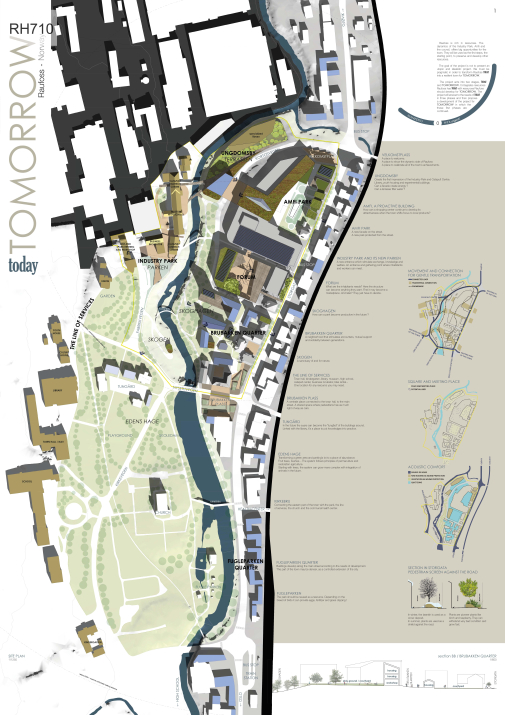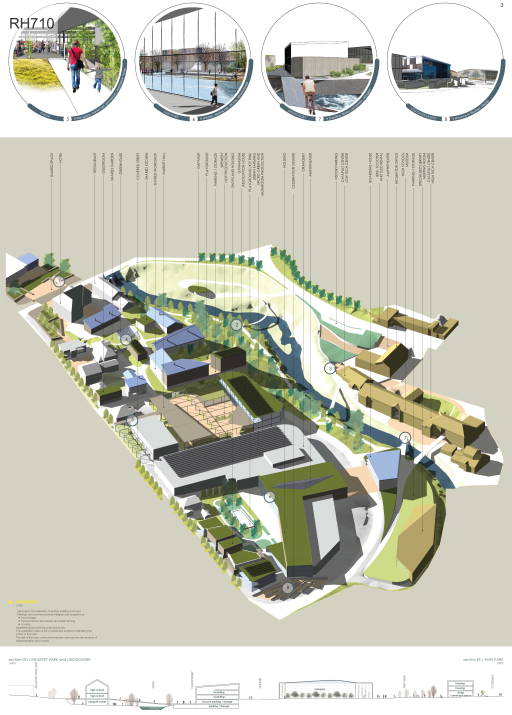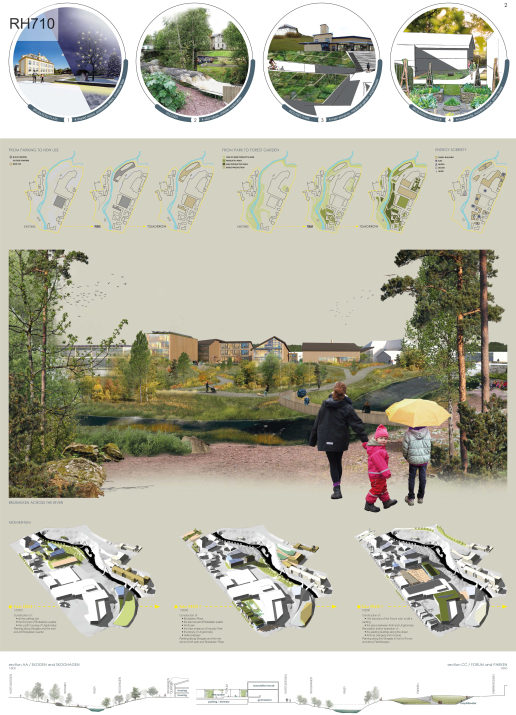Project:
Today and Tomorrow
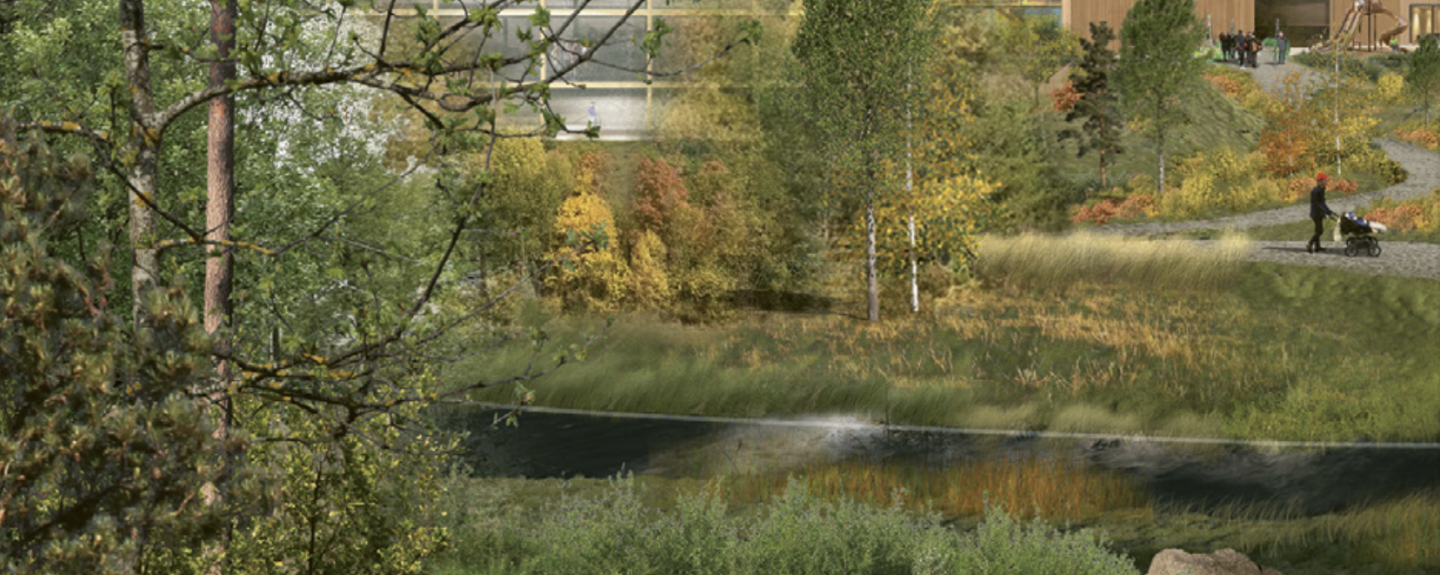
About
-
Norway is well known as one of the wealthiest countries in the world and Norwegians live in opulence. However, signs change emerges.
Statoil changed its name to Equinor and the Øljefondet stopped investing in the oil industry. More and more citizens are protesting against new oil drilling and for the protection of the environment. Will we still have access to abundance of oil?
Last summer was the hottest and driest summer in decades. Farmers had to deal with problems related to production. And electricity has never been as expensive due to the dependency
on rainfall for hydroelectric power. Will we still have abundance of
electricity?Today the country imports more than 60% of the food it consumes. According to Thomas Cottis, farmer, climate activist (and children of Raufoss), global warming may reduce production of food almost everywhere in the world. Will we still have access to abundance of food?
We live today in a state of unsustainable abundance. This lifestyle
could leed to a life of scarcity. Lack of petrol, lack of energy, lack of food… Perhaps no more cars, no more imports, no more supermarkets, no more lights…
It’s urgent!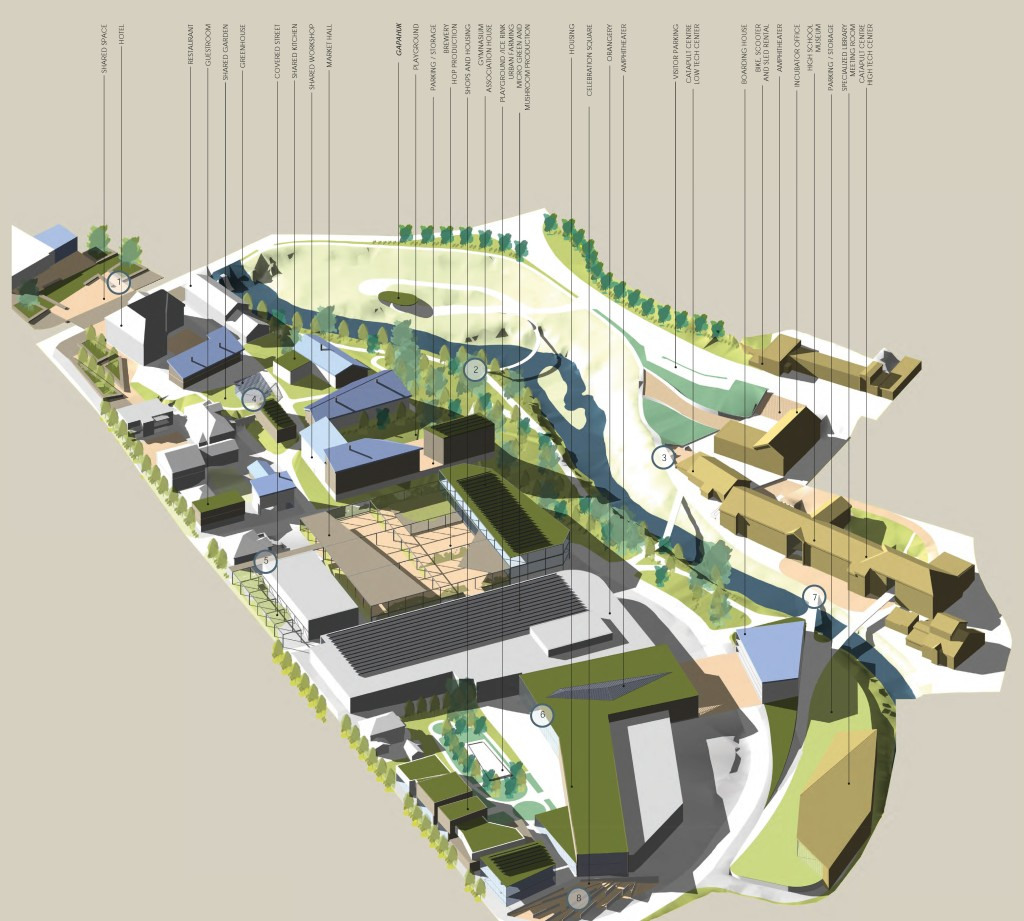
The main purpose here is not to create an utopian and idealistic project. The project must be pragmatic by transforming Raufoss TODAY into a resilient town for TOMORROW. Raufoss is rich in resources(Cf. Annex 1): water, forest, agriculture, industry, etc. The dynamics of the Industry Park, Amfi and the council, offers big opportunities for the town. They will be the fi rst step, a starting point, to preserve and develop the other resources.
The question is, how can these resources be used as a starting point to preserve and develop the other resources. The project acts into two stages, TODAY and TOMORROW. It integrates with resources Raufoss has TODAY and resources Raufoss should develop for TOMORROW. The project will answer to the needs of TODAY in three phases and then propose a development of the project for TOMORROW in which the three first phases are continued.
-
The jury would like to extend an special mention to the proposal Today Tomorrow for its joyful celebration of an urban future in which the inhabitants appreciate a novel connection to nature that goes beyond the contextual wild landscapes. The proposal brings forth an integrated nature with which people can engage. Hence, this cultivated nature has the potential to become the new civic spaces that Raufoss is searching for. As such they would be informal, inclusive and non–com- mercial, bringing people together to co–create a sustainable everyday life.
Today Tomorrow envisioned would contribute to Raufoss’s identity by contrasting industry with urban farming, and extending conventional urban models of garden city to forest city. Yet as a comprehensive proposal, Today Tomorrow lacks clarity and precision. In terms of urban design, however, the proposal’s vision might help to position Raufoss, not only as an industrial innovator, but also as an urban innova- tor, introducing a future of urban humanity.
-
Team members:
Amund Eggum Wangen (NO)
Sophie Fernet (FR)
Thyra Frederikke Grimstad (NO)
Bojana Barac (RS)Contact information:
STUDIO NSW AS
Torggt 52,
PB13 – 2301 Hamar
www.studionsw.no
post@studionsw.no
+47 625 50 400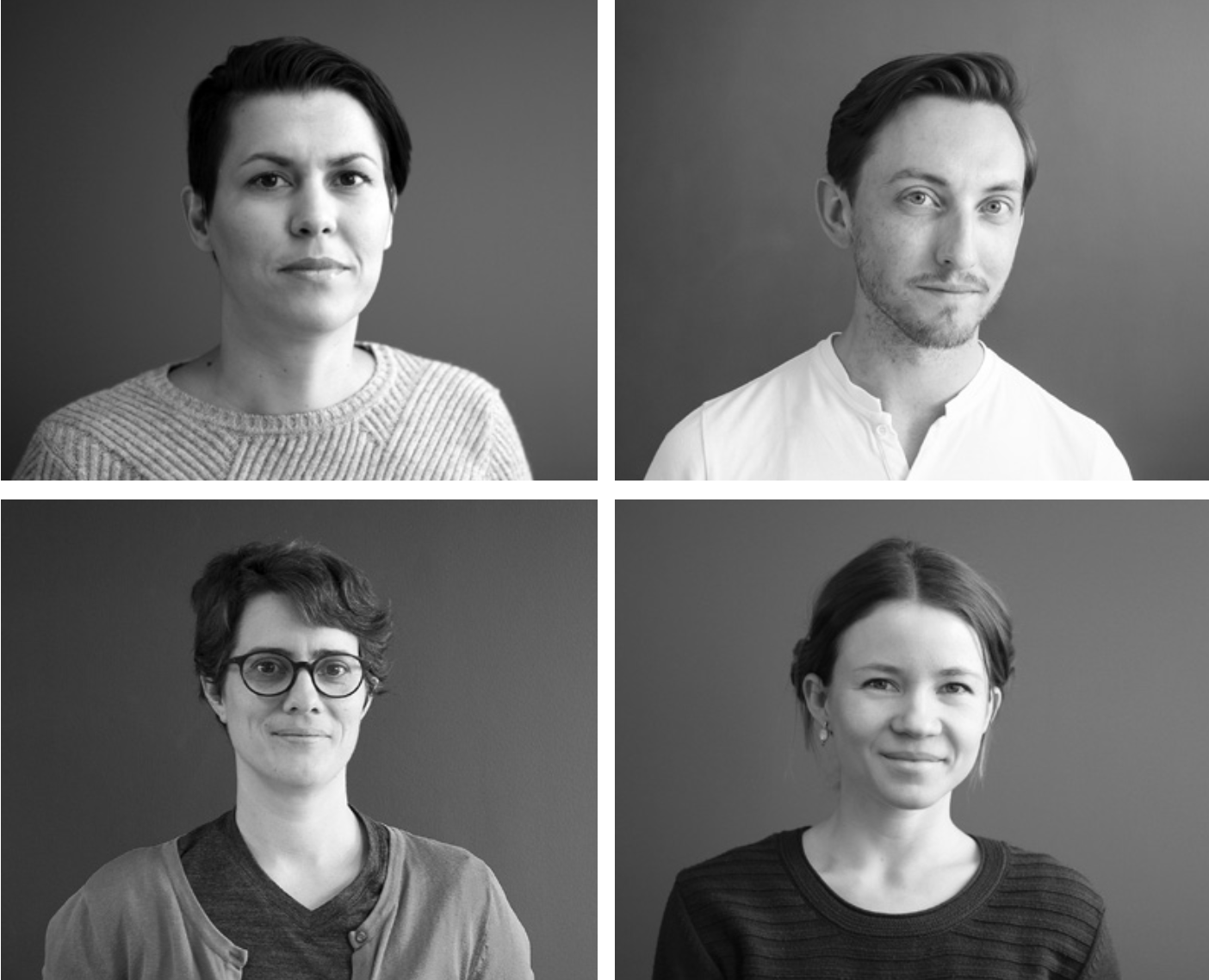
Team interview
1. How did you form the team for the competition?
The team has naturally formed within our architectural firm. We are part of the new generation at STUDIONSW and were all very motivated to take on this challenge. Our disciplines, our specialties and our different backgrounds is a strength that allows us to question ourselves and to be open to the field of possibilities.
2. How do you define the main issue of your project, and how did you answer on this session main topic: the place of productive activities within the city?
At a time when the consequences of climate change are becoming increasingly visible, the main aim of the project was to make the city resilient (in the sense of self-productive city) without the proposal being unrealistic or too utopian. The solution has been the principle of a dual program. Every current need of the town had to meet a future need.
3. How did this issue and the questions raised by the site mutation meet?
The Raufoss site is very high in constraints, needs and in different activity zones. We cut the site into sector, which allowed us to respond as specifically as possible to each need of the site and to see how each sector could make the town resilient. The richness of the site allowed us to investigate the question of parking, housing, commercial areas, local production and protected natural areas.
4. Have you treated this issue previously? What were the reference projects that inspired yours?
This is the first time we have treated this type of subject and on this scale. However, these are issues that we face in our daily practice. The significance of the Europan competition is to be able to treat the subject in a holistic way, to propose solutions on different scales and to work with connecting these with the rest of the town.
One of our greatest inspirations, was not a building, but a book: "The Transition Handbook, From Oil Dependency to Local Resilience” by Rob Hopkins. It is not the buildings, but above all the human that are the main constituents of a city.
5. Urban-architectural projects like the ones in Europan can only be implemented together with the actors through a negotiated process and in time. How did you consider this issue in your project?
The visit of the site allowed us to meet a municipal team that was very motivated and wants to change things. Good clients are key to any successful project.
Our dual program concept allows the town to take a more sustainable direction. It does not disrupt its running but answer its current and future needs. The variety of proposals in our project give it a project "à la carte". Raufoss may then develop part of the site independently of the rest, depending on the demands of its inhabitants, investors and the municipality itself.
6. Is it the first time you have been awarded a prize at Europan? How could this help you in your professional career?
Such a competition brings a very good dynamic to an architecture office. It allows to question and develop new concepts.
The Raufoss project will allow us to show that a more equitable and more environmentally friendly town is possible, especially in the surrounding towns in the Innlandet region. We strongly believe that working locally makes it possible to be more attentive to our clients, especially in the Norwegian climate.
TEAM IDENTITY
Office: STUDIONSW AS
Functions: Architecture, landscape
Average age of the associates: 33 years old
Has your team, together or separately, already conceived or implemented some projects and/or won any competition? If yes, which ones?
As members of an established firm, we have all participated in several projects, together and separately. The most recent completion involving parts of our project team is the rehabilitation of Elverum High School. In addition to rebuilding the existing school and further develop the plan layout already in place, the project also consisted of several new builds, in the form on additions, on-builds and infills.
Another project who works with the same theme of rehabilitation and add-ons, is the Milk factory, completed in 2014. The old brick factory building was given new life by renovating the brick facades, rebuilding modern interior spaces and adding corten steel-clad volumes where new functions were needed. The project has been awarded the Hamar Municipality Architectural Award for 2015.
These projects are typical of our attitude towards the built environment; refining the existing qualities and implementing new functions and uses through considered add-ons and infills.
Downloads
Related projects
-
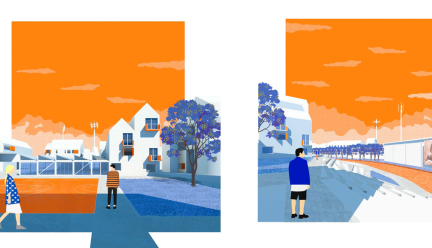
Sewn Heart
Sewn Heart is a systemic approach that allows for an incremental, yet holistic, transformation of…
-

Today and Tomorrow
Norway is well known as one of the wealthiest countries in the world and Norwegians live in…
-
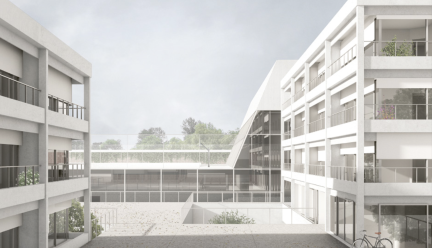
This Must Be The Place
As the future development of Raufoss requires a city centre that can accommodate an expansion of…
